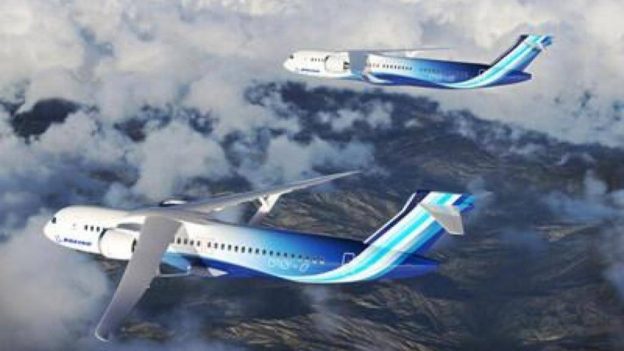The forthcoming modifications will pave the way for ground and flight testing, anticipated to commence in 2028.
Boeing has successfully transported an MD-90 aircraft to its designated location for modification as part of NASA’s Sustainable Flight Demonstrator project, focusing on the Transonic Truss-Braced Wing (TTBW) configuration. This achievement was celebrated by Boeing, NASA, and community leaders at the company’s facility.
The significant milestone heralds the development of the experimental X-66A aircraft, which is NASA’s first experimental plane designed to contribute to the U.S.’s goal of achieving net-zero greenhouse gas emissions from aviation. The forthcoming modifications will pave the way for ground and flight testing, anticipated to commence in 2028.
The pivotal progress in the Sustainable Flight Demonstrator initiative underscores Boeing’s dedication to sustainability and signifies a significant step towards validating the TTBW design. Boeing’s Chief Technology Officer, Todd Citron, highlighted the importance of this achievement, stating that it brings them closer to realizing the potential of the TTBW concept.
The TTBW design features ultrathin wings supported by expansive struts, leading to increased span and aspect ratios. Alongside other anticipated technological advancements, this design has the potential to substantially reduce fuel consumption and emissions by up to 30%. Boeing and NASA have collaborated for over a decade on this concept, primarily through the Subsonic Ultra Green Aircraft Research (SUGAR) Program.
Ed Waggoner, Deputy Associate Administrator for Programs in the NASA Aeronautics Research Mission Directorate, expressed NASA’s enthusiasm for partnering with Boeing on the X-66A Sustainable Flight Demonstrator. He highlighted its role in propelling aviation towards its ambitious 2050 net-zero greenhouse gas emission objective.
The strategic choice of location is equally significant, with Congressman Mike Garcia recognizing Palmdale’s historical significance as an aerospace innovation hub. He emphasized the area’s workforce and infrastructure as pivotal components in facilitating the project’s success.
Earlier this year, Boeing and its industry team were selected by NASA to lead the development and flight testing of a full-scale Transonic Truss-Braced Wing (TTBW) demonstrator airplane. The technologies explored and tested within the framework of the Sustainable Flight Demonstrator program have the potential to shape future designs and yield remarkable gains in aerodynamics and fuel efficiency.
In tandem with anticipated advancements in propulsion systems, materials, and systems architecture, a single-aisle aircraft featuring a TTBW configuration could revolutionize fuel consumption and emissions by up to 30%, contingent on the mission. The program aligns with the aviation industry’s collective pursuit of achieving net zero carbon emissions by 2050, as well as the objectives outlined in the U.S. Aviation Climate Action Plan presented by the White House.
Greg Hyslop, Boeing’s Chief Engineer and Executive Vice President of Engineering, Test & Technology, underscored the significance of the Sustainable Flight Demonstrator program in contributing to a sustainable future. He highlighted the opportunity it provides to develop and deploy a full-scale experimental plane while solving novel technical challenges.
The innovative TTBW airframe concept is the culmination of more than a decade of development, fostered by NASA, Boeing, and industry investments. Through past NASA initiatives like the Subsonic Ultra Green Aircraft Research program, Boeing conducted extensive wind tunnel tests and digital modeling to refine the TTBW design. The foundation for this concept was laid during NASA’s Environmentally Responsible Aviation program’s early conceptual studies.
In conclusion, the remarkable progress achieved by Boeing, in collaboration with NASA and community leaders, underscores a significant milestone in the realm of sustainable aviation. The culmination of years of development and research brings the aviation industry closer to realizing its goal of net-zero emissions while showcasing the power of collaboration between government, industry, and community stakeholders.
https://www.financialexpress.com/business/defence-boeing-and-nasa-join-forces-to-pioneer-greener-flight-with-innovative-aircraft-modification-3215248/





